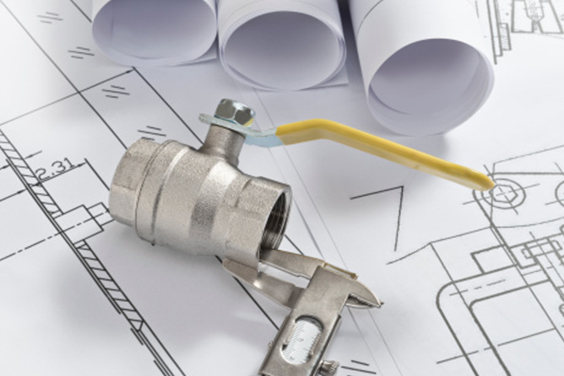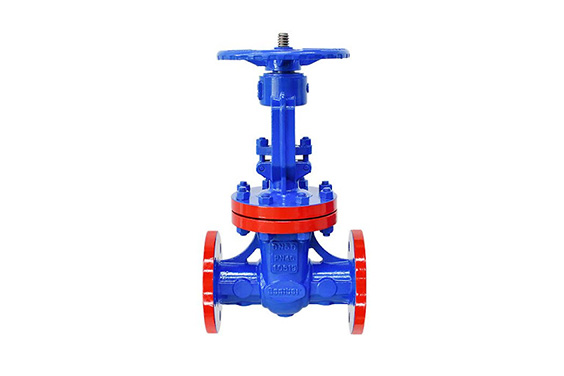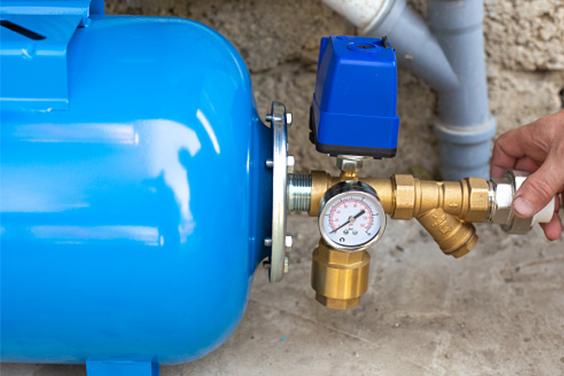
The gate valve is a particular type used to perform various industrial processes and machinery functions. These valves have become increasingly popular with the rise of new technologies that require smaller, more compact solutions.
When it comes to installing a gate valve, things can get tricky. The fact is that there are so many different elements that need to be taken into account when trying to install one of these valves. The valve placement, what kind of piping will be required, and even how much pressure the system needs to withstand are just some things that need to be considered. However, if struggling with the gate valve installation process, don’t worry – This guide will help. In this blog post, we’ll provide here everything that is required to know about installing a gate valve correctly so that the system runs as smoothly as possible.
What Is A Gate Valve?

An industrial gate valve is a control valve used to shut off the flow of a liquid or gas in a pipeline. Gate valves can be used for everything from controlling the flow of a water source to regulating the flow of a gas or production line to regulating the flow of a liquid in a pipeline. Gate valves come in both normally open and normally closed designs. A normally open gate valve controls the flow by a rotating disc inside the valve’s bore. On the other hand, a normally closed gate valve has a disc set just outside the valve’s bore.
Gate Valve Installation & Maintenance Instructions

Pre-Installation Checklist
There are a few things that one should do before even starting with the installation process of the gate valve. Gate valve installation instructions make everything run smoother and be easier to complete. So what should we need to do? – Before installing the gate valve, make sure to know precisely what the valve is being used for. This will help to decide on the best installation method. Another thing one should do before installing the gate valve is to have a clean workspace. This will make sure not to make a mess while working! – Next, decide where the gate valve is going to be placed. This is an important decision as it can affect the rest of the installation. The placement of the valve will also affect how accessible it is for maintenance purposes.
Storage Conditions
It is recommended not to remove the valves from their packaging until they are ready to be installed. This will protect the seals and seats from foreign elements. This protects the valve from dirt and debris that could eventually lead to seat leakage. If in case, the valve is stored for a longer time, keep it in a cool, ventilated place.
Valve Installation
- Although valves can be placed in any direction, installing them up-right in larger sizes is better.
- Before installation, review the material of the seat and disc of the gate valve. Verify that the disc, seat, and gate valve are free from any damage caused by transportation or storage.
- Before installing the valve, finish all welding jobs. After cooling to ambient temperature, install the gate valve using the right gasket.
- Before installing the pipe, ensure it is free of welding residue, waste, or rust. If necessary, wash the pipe with mild detergent or water.
- Verify that there is no warpage in the flange. This may be the leading reason for valve issues. To reduce the piping load assembly, support the valve wherever necessary.
- Establish the spacing bolts carefully not to harm the seat of the valve. Modify the face-to-face position of the two flanges to ensure there is enough space between the piping and the valve (enough to slide the valve in/out for service)
- After the pipes have been centered, place the bolts for the base of the valve to rest upon them. This will control the valve from falling.
- To ensure that the seal between the gasket, valve and flanges is created, tighten each bolt once at a time.
- After the installation, it is advised to test the valve multiple times to ensure it does not move during installation.
Installing the Body of the Gate Valve
The first step of installing a gate valve is to mount the valve body. The valve body is the component that connects to the piping, and it includes the bonnet and the stem. The bonnet is usually attached to the piping with a nut and a threaded connection, whereas the stem is mounted on a shaft connected to the valve disc. To install the body of the gate valve, ensure that it has all the necessary parts. When all the parts are collected, it’s time to start mounting the valve. First, mark the position of the valve on the piping and ensure the correct hole for mounting it. Then, use a wrench to tighten the valve’s body to the piping using the appropriate mounting hardware.
Installing the Rotor and Disc of a Gate Valve
The next step in installing a gate valve is to install the rotor and the valve’s disc. The rotor controls the flow of the gate valve by turning the disc inside the valve’s bore. Install the rotor and the disc by applying a sealant between the shaft and the disc. Make sure to use the correct type of sealant – Using the wrong sealant may damage the components of the gate valve. Before installing the rotor and disc, ensure they’re immaculate. Dirt or grime can cause the gate valve to malfunction. It is recommended to install them after proper cleanup. To do so, place the disc in the valve’s bore and use sealant to attach the disc to the shaft of the rotor.
Installing Piping for a Gate Valve
After installing the body of the valve, the rotor, and the disc, move on to installing the piping. The piping of the gate valve should be installed before installing the yoke that controls the valve’s flow. To install the piping, first, add the ends to the piping. After adding the lots to the piping, install the bonnet to the ends and mount the yoke to the ends of the piping. Next, place the gate valve on the piping and connect the piping to the end of the valve. Before starting the piping installation, make sure to know the diameters of the end of the piping. If more assistance is required with this step, ask for professional help.
Field Testing
The rubber seated gate valves can only be used to control the rated pressures. The valve can be damaged if the pressure is exceeded in the closed position.
The valve can be opened so the pipeline can undergo hydrostatic pressure testing.
When foreign material gets between the body and the seat, it can cause seat leakage. Open the valve between 10% and 15% to flush the seat with high-velocity water. Close the valve and repeat if necessary.
Operation
- Use the valve only at pressures below its working pressure.
- Check the valve seat and face if the valve is stuck in an open or closed position. Check for unfamiliar objects and remove them.
- Overtorque from actuators can cause damage to inner valve elements.
Maintenance
- If the valve is not being used frequently, cycle it at least once per month.
- Before performing any maintenance, reduce the pressure on the system.
- Reverse the process of installation to remove from pipework
- Remove the bonnet and stem from the valve gate. Replace the part with a new one. Refit the body by installing the top.
Design Guidance and Product Advantages
- Consider the space available for the handwheel process when sizing the valve.
- To carry extra weight, consider using valve supports.
- On request, extension shafts made of 316 Stainless Steel can be ordered. This allows the valve to be installed in a pit with the above-ground operation.
- These valves are equipped with Ductile Iron bodies to increase their strength. The high finish molded seats provide low torque for long, maintenance-free operation.
What Else Need to Know About Installing a Gate Valve?
There are a few other things that need to be known before starting installing the gate valve. These include: -The type of piping used for the installation. Make sure to decide whether to use steel or plastic piping for the installation. This will depend on what pressure the system needs to withstand. Steel piping is more durable and can withstand higher pressures than plastic piping can. – Exactly how much pressure the system needs to withstand. This will help to decide what type of gate valve needs to be installed. This will also help to decide whether to install a gate valve with a pressure release system or not.
Things To Consider Before Starting Installation Of Gate Valve

Before starting the gate valve installation procedure, here are the essential things to be aware of. These will help decide on the best installation method and avoid making mistakes.
Gate Valve Position
When it comes to the position of the gate valve, make sure to consider what the valve is being used for and where the rest of the system is being placed. This will help to decide whether to put the valve outdoors or indoors. If using the gate valve to shut off the flow of water, it will be good to place it outdoors.
Gate Valve Size
Considering the size of the gate valve that needs to be installed, consider the amount of flow the pipeline needs to handle. A large gate valve will work better if the pipeline needs to handle a large amount of flow. A smaller gate valve can work better if the pipeline only needs to handle a small amount of flow.
Gate Valve Installation Method
Two different installation methods can be used to install a gate valve. These are: – Top-end installation and Bottom-end installation. The top-end installation is the most common installation method. This is because it’s easy to do and doesn’t require any additional tools or piping. Bottom-end installation, on the other hand, does require additional piping and a special wrench. If not sure which installation method should be used to install the gate valve, check out the difference between both.
Top-End Installation
Top-end installation involves installing the gate valve at the very end of the pipeline. This is the most common installation method for gate valves. Cut the pipe and install the gate valve at the very end of it. This will help reduce the amount of pressure the system needs to withstand. This is because the gate valve will only be used to close off the end of the pipeline.
Bottom-End Installation
Bottom-end installation involves installing the gate valve at the very beginning of the pipeline. This is a good option if the pipeline needs to handle a lot of pressure. This is because the gate valve will be used to close off the very start of the pipeline. This will help to reduce the pressure that the system needs to withstand.
Bottomline
This installation guide has provided all the information needed to install a gate valve properly. Make sure to follow all of the steps outlined in the manual, and if you still have any questions, consult a professional. With proper installation, the gate valve should provide years of trouble-free operation. Also, contact us for more information on the installation process or purchasing gate valves.









